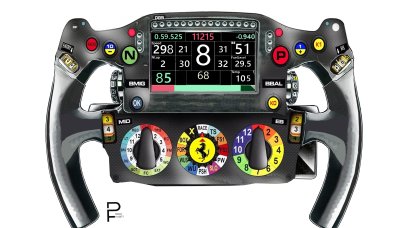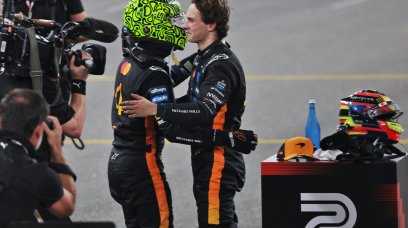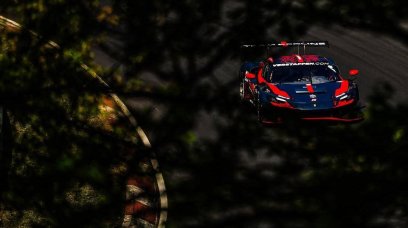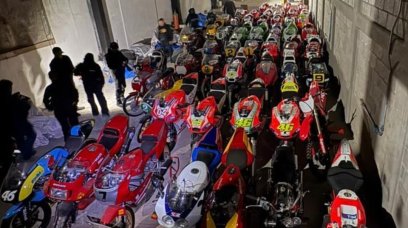Baku’s Street Circuit has produced some of the most exciting Formula 1 moments in recent years since it made its debut in 2016. There have been many wild safety car restarts, fierce battles and crazy overtakes on a track which has become one of the most popular venues on the calendar. Other than the inaugural race in 2016, the three following trips to Baku have delivered plenty of drama. In 2017, Daniel Ricciardo won from 10th on the grid with an incredible three-car overtake whilst Sebastian Vettel drove into Lewis Hamilton during the safety car. A year later, Ricciardo collided with Red Bull teammate Max Verstappen at nearly 300km/h as Vettel's late-race lunge for the lead failed to pay off. The latest F1 action in Azerbaijan saw an eventful qualifying session with Ferrari's Charles Leclerc crashing out at the Castle Section having been favourite for pole position. RacingNews365.com takes a look at what makes Baku so special and tricky for the teams and drivers.
A setup conundrum
The unique Azerbaijan circuit features a flat out section from the exit of Turn 16 all the way through to Turn 1 which sees the drivers with their right foot on the throttle pedal for 25 seconds over 2.2km. This forces the engineers to set the cars up for a high top speed or else the drivers will simply be sitting ducks on the main straight and will be extremely vulnerable in the race. For the drivers, it makes driving the car very tough as they have to deal with a likely twitchy car around the 90 degree bends. On a track where there is no run-off, with concrete walls looming on the outside of every turn, it makes Baku one of the most difficult challenges of the year. "The circuit has a mix of areas where the priority is top speed, with the middle sector more dependent on downforce and mechanical grip," said Fernando Alonso in a press release. "It’s a challenging weekend for both car and driver and finding a good balance with the setup will be very important."
Guaranteed safety car restart drama
Safety car restarts at Baku are always chaotic. Due to the safety car lights only being turned off after Sector 2, the leader has no corners to try and build a gap. They simply have to try and catch their rivals off guard but even then, the long straight down to Turn 1 gives a perfect opportunity for a car behind to simply get into the slipstream and get alongside. Cars often go three-wide into the first braking zone as the pack bunches up at over 300km/h. There is definitely no shortage of wheel to wheel action after a safety car at Baku.
Ever-changing temperatures
The sessions at the Azerbaijan GP start later than usual in Baku with qualifying and the race beginning at 16:00 local time. This means the temperature drops as the session progresses. A lot of the track is in the shade too due to the high city buildings and this gives the engineers a headache. Getting the tyres into the optimal working window in F1 is crucial but the constantly cooling track temperature at Baku is a nightmare for the teams. Being quick at 16:00 does not equate to being quick one hour later when it's the climax of Q3. In 2019, the falling temperatures helped Mercedes significantly as Ferrari looked on course to take pole position. But, red flags and long delays meant the track conditions changed and went in favour of the Silver Arrows. In Monaco, Mercedes and Hamilton lost out due to the different track conditions from Thursday practice to qualifying whilst Red Bull benefitted. If there are red flags in qualifying this weekend, don't be surprised to see the pecking order change as the track temperature falls.
The C5 makes its Azerbaijan debut
Pirelli have opted to use the softest tyre compounds in Azerbaijan, the C3-C4-C5 tyres. The C5 has only been used once this year and that was last time out at Monaco. "The reason for this nomination is that the hard wasn't used at all in the Baku race in 2019, whereas the medium was used extensively," Pirelli boss Mario Isola told the press. "By re-aligning the nominations, we hope to see all three compounds playing an important role and leading to some different strategies." The long main straight causes the tyres to cool a lot so getting the tyres into a window so the drivers can trust the car and really push in the first sector is difficult. Sector 3 only has one real corner so it's the opening two-thirds of the lap where the lap time can be made. Mercedes tend to gain less time than other teams on the softer tyre compounds so it will be fascinating to see whether they have learned from last time out at Monaco and can find the sweet spot with the soft tyre this weekend. That will be the deciding factor as to whether it's Mercedes or Red Bull who lead the way in Azerbaijan.
Most read






